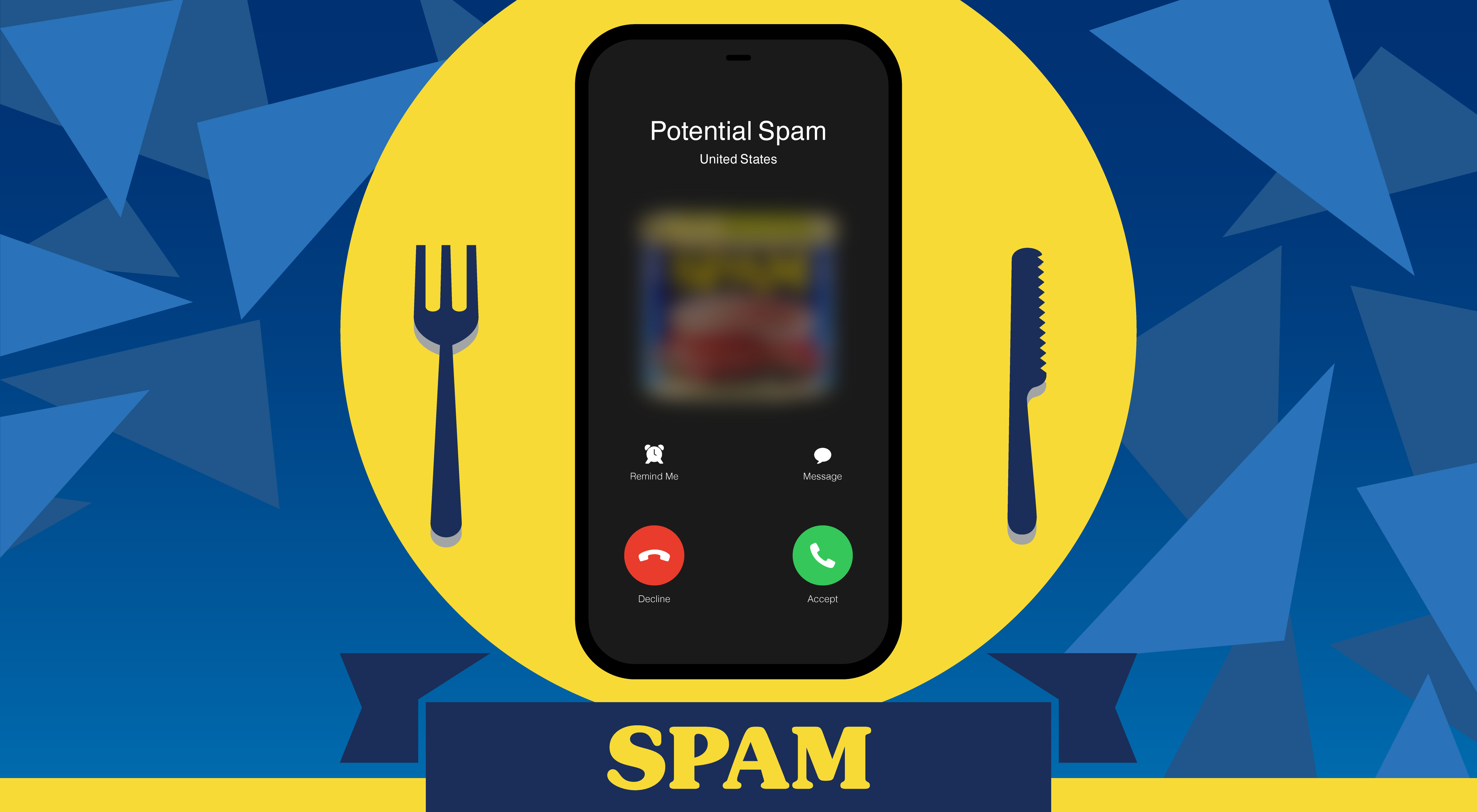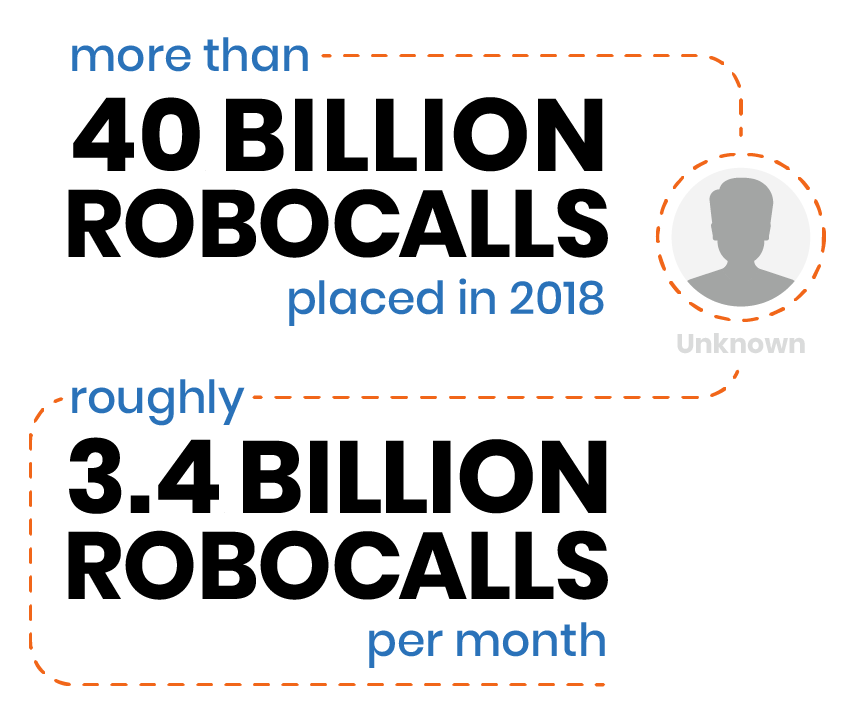How To Fix My Caller ID Showing Up As “Scam Likely”

WHAT IS A “SCAM LIKELY” FLAG?
Scam calling rates have hit an all-time high, and the situation only seems to be getting worse. The proliferation of robocalling systems has made scam calling easier than ever to commit, and more annoying than ever to experience. In fact, the Pew Research Center reports that there were more than 40 billion robocalls placed in 2018. That’s roughly 3.4 billion robocalls per month.

Even if you run a legitimate outbound call-based business, it’s easy to understand why people are increasingly suspicious of unknown callers and why so many tools are being created to flag them. You may have already experienced some of your phone numbers being flagged as “scam likely” or “spam risk”, and you’re probably wondering both why this occurred and what you can do about it.
Those are both good questions, and the answers aren’t as simple as you’d hope. So let’s dig right into why phone numbers get flagged, how flags impact your business, and what you can do to avoid getting flagged in the future.
To help combat the recent increase in scam calls we’ve all experienced, phone carriers have instituted a new system that allows call recipients to flag numbers as “scam likely” or “spam risk.”
This flag relays to new callers that previous recipients have identified a number as spam, allowing them to make a more informed decision in whether or not they want to answer the call.
WHY DO NUMBERS GET FLAGGED AS “SCAM LIKELY”?
There are three ways your phone numbers can be flagged as “scam likely” or “spam risk.”
- A call recipient manually blocks your number using a call blocking app
- Carriers identify that you have been making too many outbound calls that match spam profiles
- One of your numbers was erroneously flagged
Let’s dig into each of these a bit more so you can have a better understanding of why your numbers are being flagged.
When Call Recipients Flag Numbers
While proper outbound call practices go a long way towards keeping your numbers from being flagged as spam, at the end of the day, it’s entirely up to the call recipients. Call blocking apps are both abundant and easy to use, so if you catch someone at a bad time or accidentally reach the wrong recipient, there is very little to keep your number from being flagged.
One block isn’t enough to flag one of your phone numbers as spam, but if a call clocking app sees that you’ve received multiple blocks or flags in a short amount of time, they will almost certainly label your number as “scam likely” or a “spam risk”.
Luckily for outbound call-based businesses, call blocking apps only work with specific carriers. So if one of your phone numbers gets flagged by one app, chances are high that your caller ID will still show up normally on other carriers.
This can get confusing with some recipients seeing “scam likely” while others see your normal caller ID, but it’s better than all of your outbound calls being universally viewed as spam.
Since call recipient flags are completely outside of your control, the most surefire way to avoid them is to maintain proper outbound dialing practices and follow scripts that seek to inform rather than mislead potential customers.
When Call Carriers Flag Numbers
A common carrier practice is to have call activity thresholds that monitor phone numbers to make sure they aren’t being used for nefarious purposes. An easy example is that if one phone number makes more than 10 calls a minute, 100 calls a day, or 1000 calls a week, it’s incredibly unlikely that phone number is being used by a real life human person to conduct reputable business.
When a carrier notices such activity, they’ll assign a flag to your phone number, identifying it as likely being used for scams or robocalling.
The most likely cause of carrier flags is using power dialers or other mass-dialing technology. When dialing individual leads, agents can only speak with a few people every hour. So if your phone number reports that it’s called dozens of different numbers in the same amount of time, that’s an easy number to flag.
A good strategy to help you reduce the chance of being flagged by carriers as spam is to change the phone numbers you’re using to call prospects throughout the day. This will help keep them under carriers’ call thresholds, and also reduce the number of chances for specific numbers to be flagged by recipients.
Every carrier has different thresholds for what is considered spam and monitors call behavior in different ways. Unfortunately for outbound call-based businesses, the processes they use are not available to the public. As with recipient flags, the best way to avoid being flagged as “scam likely” or “spam risk” is to follow ethical calling guidelines.
Call Spoofing
In rarer cases, one or more of your phone numbers could also be spoofed by real scammers, resulting in flags for your business that aren’t actually your fault. There’s not much you can do in these cases except report that your number has been spoofed. Trying to trace the spoofers is generally not worth your time.
HOW DOES GETTING FLAGGED AFFECT YOUR BUSINESS?
As you’d expect, having your outbound calls to prospects show up as “scam likely” or “spam risk” will destroy your answer rates. It will take exponentially more calls to get prospects on the phone. You’ll have to spend a lot more time at the beginning of calls explaining that you aren’t a scam. Overall trust in your business will plummet.
We cannot overstate the potential financial risk to your business if your phone numbers start being flagged.
HOW TO DEAL WITH YOUR NUMBERS BEING FLAGGED AS “SCAM LIKELY”
At the moment, there is no process to get your caller ID re-evaluated or unflagged if your phone numbers start showing up as “scam likely” or “spam risk.” Ultimately, it’s the responsibility of the FCC and individual carriers to create a review system. Until they do, there’s not much you can do besides using new phone numbers for outbound calls.
Yes, it would be ideal if businesses had a way to dispute flags on their numbers or have their case reviewed by the FCC. But remember that flags are intended to protect customers and call recipients, not the businesses doing the calling. You can always try to reach out to carriers directly and work with them to remove flags, but your mileage may vary.
If you aren’t already doing so, also get in the habit of routinely calling yourself from your phone numbers for to check for possible flags. You may not be able to remove a flag from your number or avoid prospects reporting you as spam, but you can avoid serious repercussions for your business by quickly swapping out flagged numbers.
For current FluentStream clients experiencing issues with their caller ID showing up as “scam likely” or “spam risk,” contact our Client Experience Team and we’ll do everything we can to get you back on the phones.
Have more questions about avoiding “scam likely” flags on your phone numbers? Interested in communications features that help you responsibly improve connection rates and hit quota? Let us know at sales@fluentstream.com or by calling 303-GO-CLOUD and selecting Option 1.
Scam calling rates have hit an all-time high, and the situation only seems to be getting worse. The proliferation of robocalling systems has made scam calling easier than ever to commit, and more annoying than ever to experience. In fact, the Pew Research Center reports that there were more than 40 billion robocalls placed in 2018. That’s roughly 3.4 billion robocalls per month.

Even if you run a legitimate outbound call-based business, it’s easy to understand why people are increasingly suspicious of unknown callers and why so many tools are being created to flag them. You may have already experienced some of your phone numbers being flagged as “scam likely” or “spam risk”, and you’re probably wondering both why this occurred and what you can do about it.
Those are both good questions, and the answers aren’t as simple as you’d hope. So let’s dig right into why phone numbers get flagged, how flags impact your business, and what you can do to avoid getting flagged in the future.
WHAT IS A “SCAM LIKELY” FLAG?
To help combat the recent increase in scam calls we’ve all experienced, phone carriers have instituted a new system that allows call recipients to flag numbers as “scam likely” or “spam risk.”
This flag relays to new callers that previous recipients have identified a number as spam, allowing them to make a more informed decision in whether or not they want to answer the call.
WHY DO NUMBERS GET FLAGGED AS “SCAM LIKELY”?
There are two ways your phone numbers can be flagged as “scam likely” or “spam risk.”
- A call recipient manually blocks your number using a call blocking app
- Carriers identify that you have been making too many outbound calls that match spam profiles
- One of your numbers was erroneously flagged
Let’s dig into each of these a bit more so you can have a better understanding of why your numbers are being flagged.
When Call Recipients Flag Numbers
While proper outbound call practices go a long way towards keeping your numbers from being flagged as spam, at the end of the day, it’s entirely up to the call recipients. Call blocking apps are both abundant and easy to use, so if you catch someone at a bad time or accidentally reach the wrong recipient, there is very little to keep your number from being flagged.
One block isn’t enough to flag one of your phone numbers as spam, but if a call clocking app sees that you’ve received multiple blocks or flags in a short amount of time, they will almost certainly label your number as “scam likely” or a “spam risk”.
Luckily for outbound call-based businesses, call blocking apps only work with specific carriers. So if one of your phone numbers gets flagged by one app, chances are high that your caller ID will still show up normally on other carriers.
This can get confusing with some recipients seeing “scam likely” while others see your normal caller ID, but it’s better than all of your outbound calls being universally viewed as spam.
Since call recipient flags are completely outside of your control, the most surefire way to avoid them is to maintain proper outbound dialing practices and follow scripts that seek to inform rather than mislead potential customers.
When Call Carriers Flag Numbers
A common carrier practice is to have call activity thresholds that monitor phone numbers to make sure they aren’t being used for nefarious purposes. An easy example is that if one phone number makes more than 10 calls a minute, 100 calls a day, or 1000 calls a week, it’s incredibly unlikely that phone number is being used by a real life human person to conduct reputable business.
When a carrier notices such activity, they’ll assign a flag to your phone number, identifying it as likely being used for scams or robocalling.
The most likely cause of carrier flags is using power dialers or other mass-dialing technology. When dialing individual leads, agents can only speak with a few people every hour. So if your phone number reports that it’s called dozens of different numbers in the same amount of time, that’s an easy number to flag.
A good strategy to help you reduce the chance of being flagged by carriers as spam is to change the phone numbers you’re using to call prospects throughout the day. This will help keep them under carriers’ call thresholds, and also reduce the number of chances for specific numbers to be flagged by recipients.
Every carrier has different thresholds for what is considered spam and monitors call behavior in different ways. Unfortunately for outbound call-based businesses, the processes they use are not available to the public. As with recipient flags, the best way to avoid being flagged as “scam likely” or “spam risk” is to follow ethical calling guidelines.
Call Spoofing
In rarer cases, one or more of your phone numbers could also be spoofed by real scammers, resulting in flags for your business that aren’t actually your fault. There’s not much you can do in these cases except report that your number has been spoofed. Trying to trace the spoofers is generally not worth your time.
HOW DOES GETTING FLAGGED AFFECT YOUR BUSINESS?
As you’d expect, having your outbound calls to prospects show up as “scam likely” or “spam risk” will destroy your answer rates. It will take exponentially more calls to get prospects on the phone. You’ll have to spend a lot more time at the beginning of calls explaining that you aren’t a scam. Overall trust in your business will plummet.
We cannot overstate the potential financial risk to your business if your phone numbers start being flagged.
HOW TO DEAL WITH YOUR NUMBERS BEING FLAGGED AS “SCAM LIKELY”
At the moment, there is no process to get your caller ID re-evaluated or unflagged if your phone numbers start showing up as “scam likely” or “spam risk.” Ultimately, it’s the responsibility of the FCC and individual carriers to create a review system. Until they do, there’s not much you can do besides using new phone numbers for outbound calls.
Yes, it would be ideal if businesses had a way to dispute flags on their numbers or have their case reviewed by the FCC. But remember that flags are intended to protect customers and call recipients, not the businesses doing the calling. You can always try to reach out to carriers directly and work with them to remove flags, but your mileage may vary.
A fantastic way to keep your phone numbers from hitting call activity thresholds or appearing spammy is to use local presence dialing. Our version is called Local Area Presence and it automatically matches your outbound caller ID to the number you dialed. It’s not number spoofing since you own all the phone numbers you use, and it’s a great way to increase your connection rate since prospects are four times more likely to answer local numbers.
Learn more about Local Area Presence here on our feature page.
If you aren’t already doing so, also get in the habit of routinely calling yourself from your phone numbers for to check for possible flags. You may not be able to remove a flag from your number or avoid prospects reporting you as spam, but you can avoid serious repercussions for your business by quickly swapping out flagged numbers.
For current FluentStream clients experiencing issues with their caller ID showing up as “scam likely” or “spam risk,” contact our Client Experience Team and we’ll do everything we can to get you back on the phones.
Have more questions about avoiding “scam likely” flags on your phone numbers? Interested in communications features that help you responsibly improve connection rates and hit quota? Let us know at sales@fluentstream.com or by calling 303-GO-CLOUD and selecting Option 1.
Visited 5140 Times, 3 Visits today


